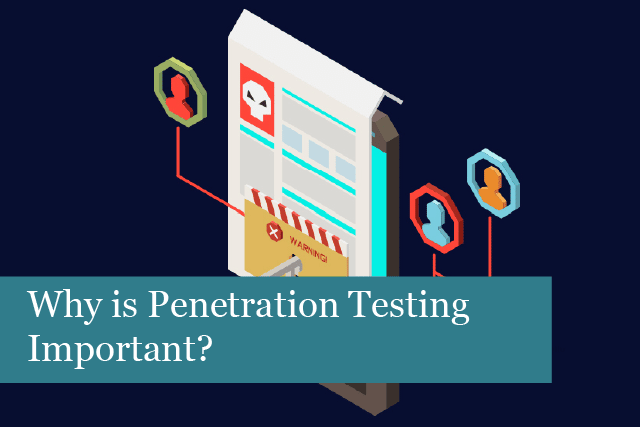
Cyber security is a major concern for every business today. Companies not prepared for cyberattacks stand to lose millions of pounds and their sensitive data. One of the best ways to ensure a company is ready to withstand cyberattacks is through security testing techniques, such as penetration testing.
What is Penetration Testing?
Penetration testing (also called pen testing or ethical hacking) is the process of conducting security evaluations on a company’s infrastructure. Pen testing searches for any vulnerabilities to threats such as cyberattacks and hackers.
Pen tests use simulated attacks to find vulnerabilities in a network’s security. The most common pen tests include:
- Targeted testing
- Internal and external testing
- Blind testing
- Double-blind testing
Why is Penetration Testing Important?
Pen testing is an important part of running a business. Here are the main reasons penetration tests are so important:
Risk assessment: the risk assessment determines how much it would cost if your network was attacked by a hacker. It can determine the highest risk areas and the impacts of a cyberattack. When the risk assessment is completed, it’s imperative to develop a list of prioritised objectives to keep your business secure.
Decrease the number of errors: pen testing can also ensure that developers make fewer errors. Penetration testing, in this case, is important for companies that have recently made major upgrades to their IT infrastructure and applications, moved to a new office, applied security patches, or have modified end-user policies.
Regulations & compliance: certain industries must follow certain regulations and be in compliance with security requirements. Not doing so means a business could be in danger of losing its licence to operate or even prison time for certain individuals. In addition, data privacy and protection are also required for most companies. For instance, the EU’s GDPR regulates how a business can manage data. Without compliance, a company could face huge legal fines and more.
Reputation: a company’s reputation is on the line when it suffers a major data breach. Customers lose their confidence in the business, leading to a drop in revenues and profits. In addition, investors may also drop a company with a poor security reputation. A data breach can cause significant losses in reputation and more.
Preparation for an attack: penetration tests are also beneficial to ensure a company is ready for a cyberattack. Employees can also learn how to handle such an attack. In addition, pen testing can determine whether a business has effective security policies in place.
As you can see, pen testing is essential for protecting a company from cyberattacks, loss of reputation & customers, and more. Penetration testing also ensures that a business meets all of its regulatory and compliance requirements.
Penetration Testing Methods
Here are some of the most common pen testing methods and how they work.
External Testing
External pen tests focus on a company’s assets that are visible on the Internet. These may include the company website, web app, email, domain name servers, and more.
The goal of this test is to show whether or not these assets are vulnerable and to find/fix those vulnerabilities.
Internal Testing
Internal pen tests give the tester access to an app behind its firewall to simulate an attack by a malicious insider.
Malicious insiders may include an employee unhappy with the company or an employee whose credentials have been stolen through a phishing attack.
Blind Testing
Blind testing provides a tester with the name of the company that’s being tested. They can then conduct a simulated attack against the company, resulting in a real-time look at how an actual attack may take place.
Double-Blind Testing
This test involves a simulated attack on the company with no prior knowledge. That means the business doesn’t have time to ensure its assets and infrastructure are secure before the attack.
Targeted Testing
With this penetration test, the tester and the company work together and stay appraised of one another’s activities. This is a great training exercise that offers the security team a real-time view of a hacker’s perspective.
What are the Pros & Cons of Pen Testing?
Pros
Identifying Key Vulnerabilities
Penetration testing allows businesses to identify vulnerabilities from a wide range of threats.
Identify Small Risks That May Lead to Larger Weaknesses
Another pro of pen testing is that the process may find small vulnerabilities that may not appear significant. However, hackers are able to find these weaknesses and use them. A hacker may take advantage of several small vulnerabilities that lead to a more significant security breach.
Reports Provide Specific Guidance
Once penetration testing is completed, the company will have more than just a report of vulnerabilities. They will also have specific guidance on necessary steps to keep their organisation secure.
Cons
Can Do Damage If Not Done Right
One of the main cons of pen testing is that if the tests are not properly done, they can crash servers, expose sensitive data, corrupt data, and more.
The Business Must Trust the Penetration Tester
A business must trust the penetration test it hires. Hiring the wrong person or one who has no scruples could lead to major problems. For instance, the pen tester could steal valuable data and more.
It’s imperative to hire a penetration tester that is credible and trustworthy.
Unrealistic Test Conditions Can Result in Misleading Results
If employees know a pen test is coming up, they may take steps to ensure their systems are secure. This means the results of the pen test will not be accurate, and the company may appear stronger than it is.
Summing It Up
Penetration testing is essential for ensuring a business is secure against cyberattacks. Pen tests offer reports and guidance on vulnerabilities found, and help the business bolster its defences against cyberattacks.
When hiring a penetration tester, it’s important to ensure they have the credentials and expertise to carry out such sensitive tests.
Pen tests offer the best method for finding and fixing vulnerabilities in a company’s network and more. In this age of ever-increasing cyber attacks, ensuring your organisation is as secure as possible is the key to avoiding considerable losses in revenue, profits, and reputation.
Recommended Posts

Are you making the most of your Microsoft 365 licensing?
4th July 2025


